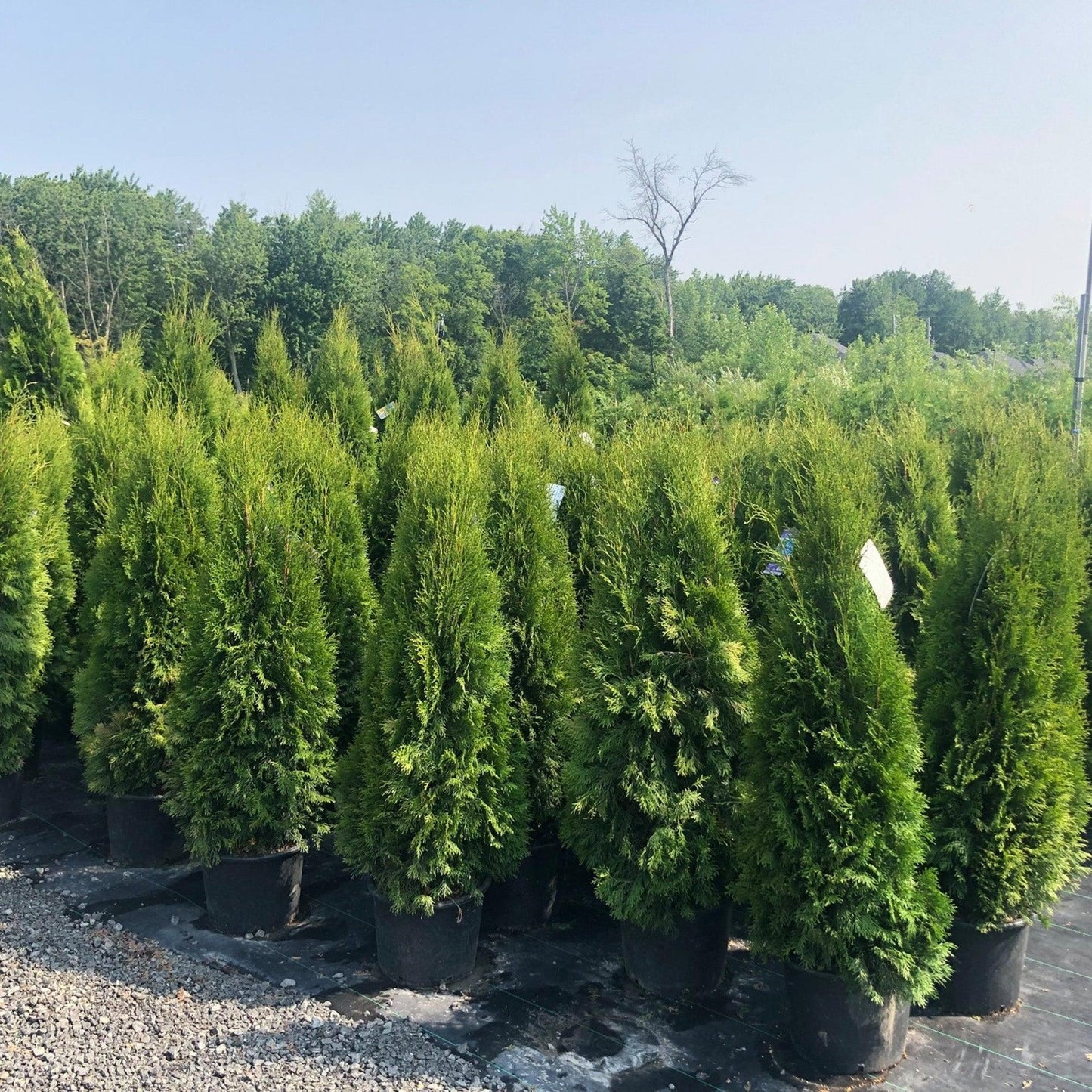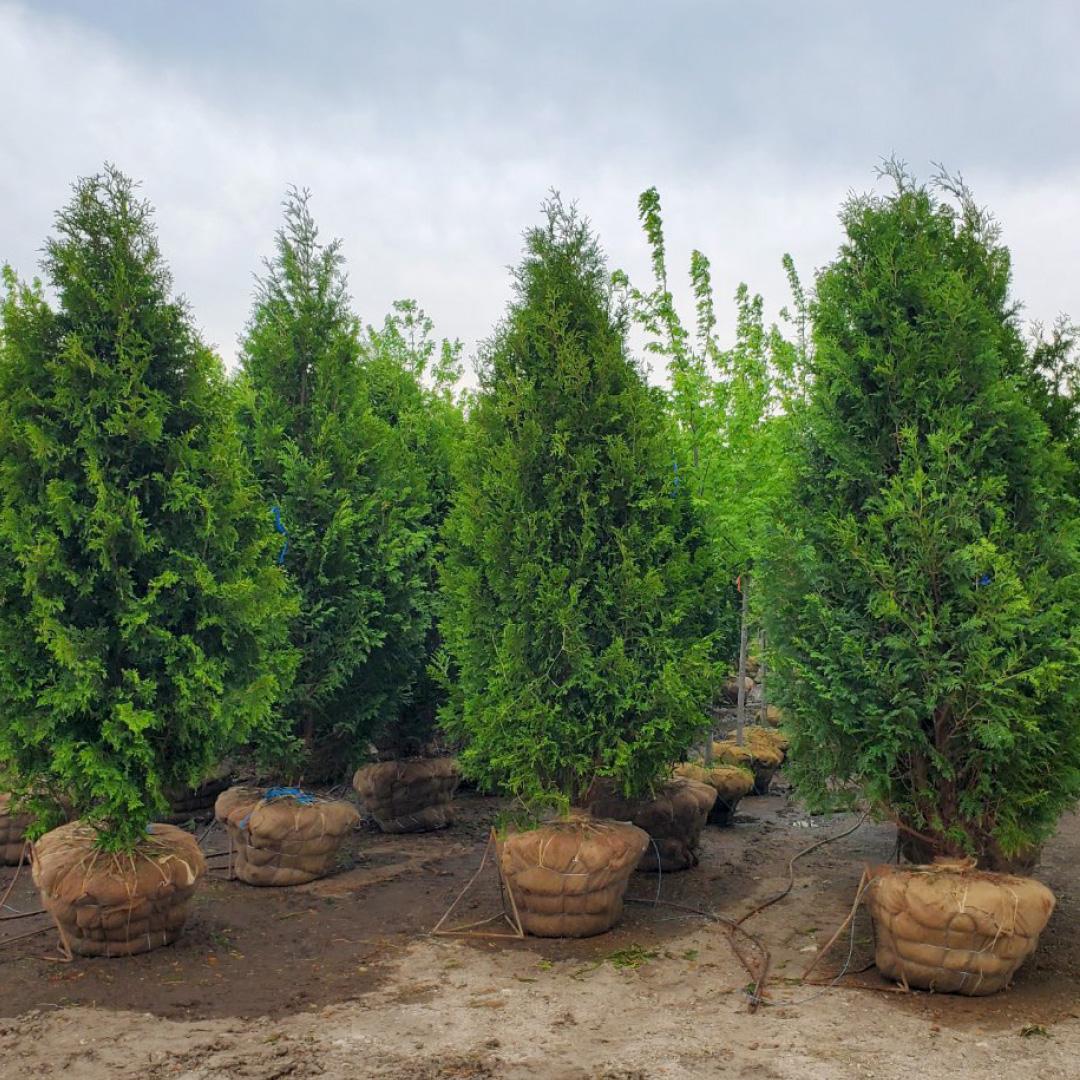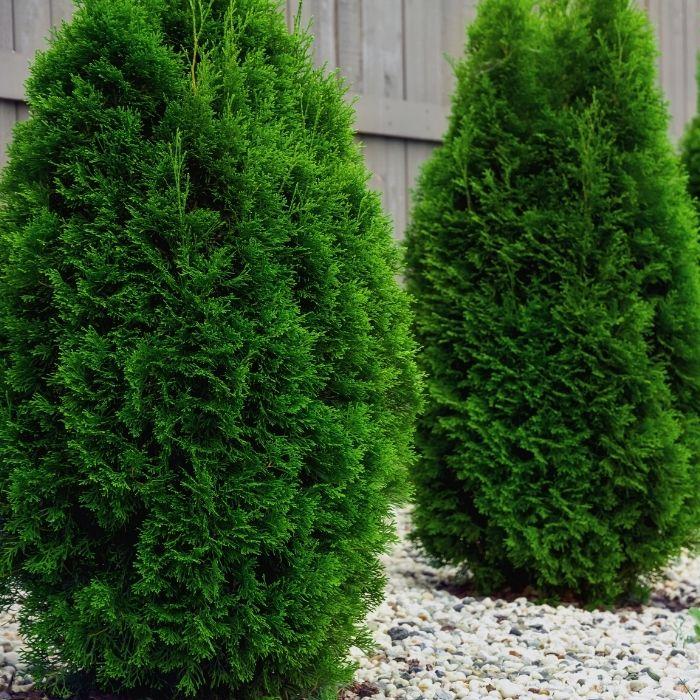1
/
of
16
Dark American Arborvitae–Thuja occidentalis 'Nigra'–Dense evergreen for privacy 10/12' h B&B
Dark American Arborvitae–Thuja occidentalis 'Nigra'–Dense evergreen for privacy 10/12' h B&B
Regular price
$2,092.00 USD
Regular price
$2,719.60 USD
Sale price
$2,092.00 USD
Unit price
/
per
Shipping calculated at checkout.
SKU:nte0338-redcrocus
Couldn't load pickup availability
Thuja occidentalis 'Nigra'
Description
Thuja occidentalis 'Nigra', commonly known as Dark American Arborvitae, is a dense, pyramidal evergreen shrub with rich, dark green foliage that retains its color throughout the year. It is a popular choice for hedges and privacy screens due to its uniform shape and low maintenance requirements.
Suggested Uses
This plant is ideal for use as a privacy screen, windbreak, or as a formal hedge. It can also be used in foundation plantings or as a specimen plant in larger landscapes.
Plant Details
-
 Botanical Name: Thuja occidentalis 'Nigra'
Botanical Name: Thuja occidentalis 'Nigra' -
 Common Name: Dark American Arborvitae
Common Name: Dark American Arborvitae -
 Size & Growth: Typically grows 20-30 feet tall and 4-6 feet wide
Size & Growth: Typically grows 20-30 feet tall and 4-6 feet wide -
 Hardiness Zones: 3-7
Hardiness Zones: 3-7 -
 Foliage Type: Evergreen
Foliage Type: Evergreen -
 Bloom Time: Non-flowering
Bloom Time: Non-flowering -
 Growth Rate: Moderate
Growth Rate: Moderate -
 Light Requirements: Full sun to partial shade
Light Requirements: Full sun to partial shade -
 Attracts Pollinators: No
Attracts Pollinators: No -
 Indoor Friendly: No
Indoor Friendly: No -
 Container Friendly: Yes, when young
Container Friendly: Yes, when young -
 Deer Resistant: Yes
Deer Resistant: Yes -
 Pet Warning: Non-toxic to pets
Pet Warning: Non-toxic to pets -
 Fragrant: No
Fragrant: No -
 Cut Flower: No
Cut Flower: No -
 Grows Well With: Junipers, Hollies, and other evergreen shrubs
Grows Well With: Junipers, Hollies, and other evergreen shrubs
Care Tips
-
 Planting Instructions: Plant in well-drained soil, spacing plants 3-4 feet apart for hedges
Planting Instructions: Plant in well-drained soil, spacing plants 3-4 feet apart for hedges -
 Soil Moisture: Keep soil consistently moist, especially in the first year
Soil Moisture: Keep soil consistently moist, especially in the first year -
 Soil Type: Prefers loamy, sandy, or clay soils
Soil Type: Prefers loamy, sandy, or clay soils -
 Humidity: Tolerates a range of humidity levels
Humidity: Tolerates a range of humidity levels -
 Pruning Instructions: Prune in early spring to maintain shape
Pruning Instructions: Prune in early spring to maintain shape -
 Winter Care: Mulch around the base to protect roots in colder climates
Winter Care: Mulch around the base to protect roots in colder climates -
 Planting Depth: Plant at the same depth as in the nursery container
Planting Depth: Plant at the same depth as in the nursery container -
 Fertilization: Fertilize in early spring with a balanced fertilizer
Fertilization: Fertilize in early spring with a balanced fertilizer -
 Special Care: Protect from strong winds to prevent desiccation
Special Care: Protect from strong winds to prevent desiccation
Share
































